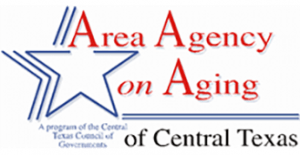If so, the Central Texas Aging, Disability & Veterans Resource Center (CTADVRC) has two Care Transition Programs that offer assistance to patients discharging form our three partner hospitals: Baylor Scott & White Health, Hamilton, and the Metroplex.
The first program, Care Transition Intervention (CTI) is administered through the partner hospitals. The second program, the Bridge Model, is administered by the CTADVRC. Both programs are based on the premise that the patient should take a more active role in their care and post-hospital recovery.
 CTI is an intervention plan (developed by Eric Coleman, MD, MPH) which uses a coach to help build a patient’s skills, develop their confidence and provide support tools so that patient can learn self-management of their chronic illness. CTI focuses on setting a personal health goal, medication review and management, education on identifying “red flag” symptoms, follow-up with a Primary Care Provider, and the patient’s personal health record. CTI includes one hospital visit, one home visit and two follow-up phone calls. We currently have six CTI coaches employed by our partner hospitals.
CTI is an intervention plan (developed by Eric Coleman, MD, MPH) which uses a coach to help build a patient’s skills, develop their confidence and provide support tools so that patient can learn self-management of their chronic illness. CTI focuses on setting a personal health goal, medication review and management, education on identifying “red flag” symptoms, follow-up with a Primary Care Provider, and the patient’s personal health record. CTI includes one hospital visit, one home visit and two follow-up phone calls. We currently have six CTI coaches employed by our partner hospitals.
If a patient discharging from one of our partner hospitals does not want to participate in CTI (which includes a required home visit), the hospital will then refer the patient to the CTADVRC which will then implement the Bridge Model. The Bridge is an alternative program which uses a social work intervention plan including assessment of patients’ emotions, thoughts, and behaviors along with their social and cultural surroundings, health status, follow-up appointments, and the very important medication reconciliation. This assessment is then followed by four phone calls and additional services and supports to meet any identified needs. If the patient is identified to be at a high risk of re-admittance to the hospital, then a home visit may occur at any time during the first 30 days to reduce that risk of readmission. There are three Bridge Transition coaches located at the CTADVRC with one of those coaches being an employee of Baylor Scott & White Hospital.
Donna Parker, CTCTP Program Manager with the Central Texas Council of Governments said, “This additional care transition program will help us reach a 30% decrease in hospital readmissions as well as reduce mortality rates and costs for at-risk older adults.”
Both CTI and the Bridge Model are recognized as evidence-based by the Centers for Medicaid and Medicare Services (CMS) and the Administration for Community Living (ACL). These programs emphasize collaboration among hospitals, community-based providers, and the Aging & Disability Network in order to ensure a seamless continuum of health and community care across settings. Both programs are 30-day interventions with the goal to prevent costly hospital readmissions.
 H. Richard McGhee, Director of the Area Agency on Aging of Central Texas, said, “It is incumbent upon us as good stewards to make sure our clients have the best care and services that scientific research has to offer. In addition to Care Transitions we offer evidence-based educational programs such as “A Matter of Balance,” a fall-prevention workshop, and classes on Diabetes/Chronic Disease self-management.
H. Richard McGhee, Director of the Area Agency on Aging of Central Texas, said, “It is incumbent upon us as good stewards to make sure our clients have the best care and services that scientific research has to offer. In addition to Care Transitions we offer evidence-based educational programs such as “A Matter of Balance,” a fall-prevention workshop, and classes on Diabetes/Chronic Disease self-management.
For more information on the Care Transition Intervention or the Bridge Model Program, please visit: http://caretransitions.org and www.transitionalcare.org .

